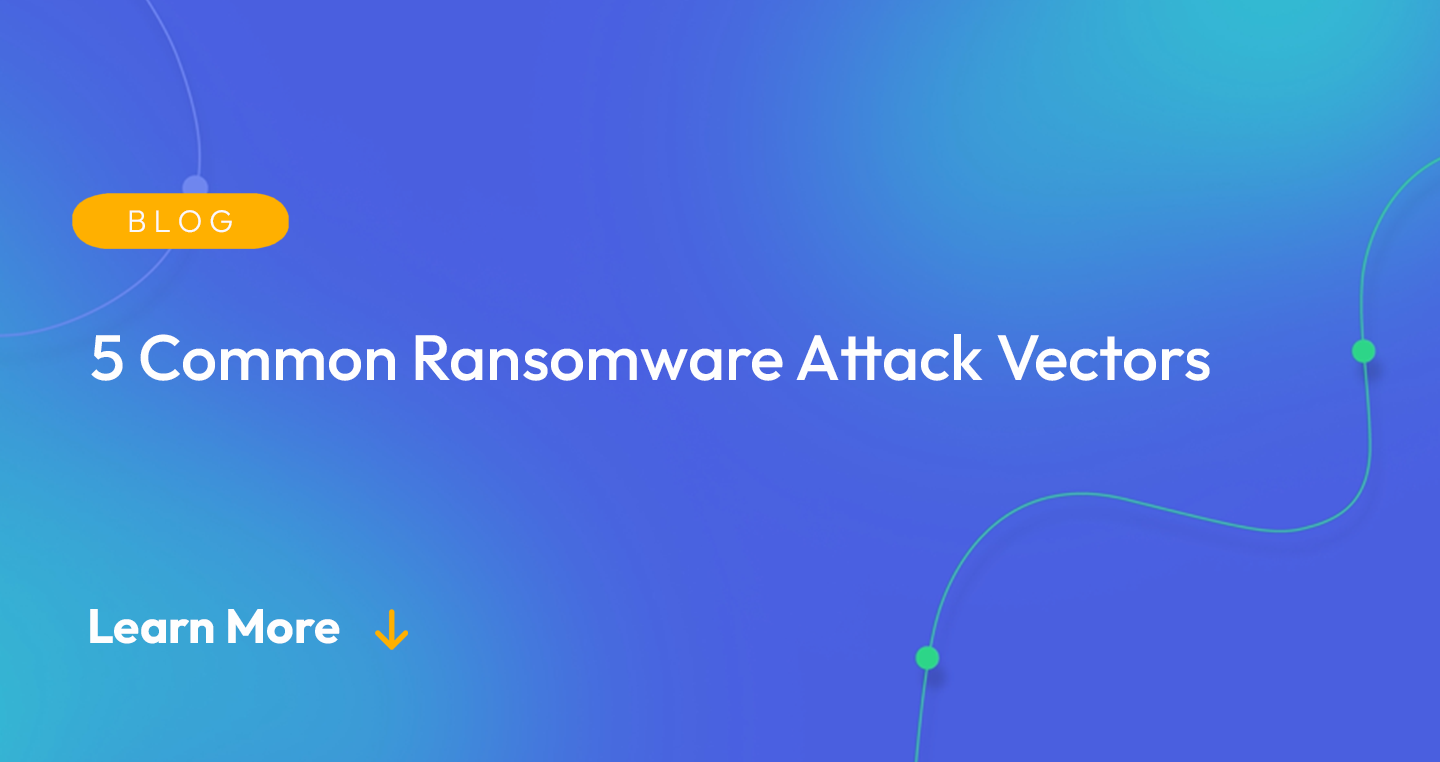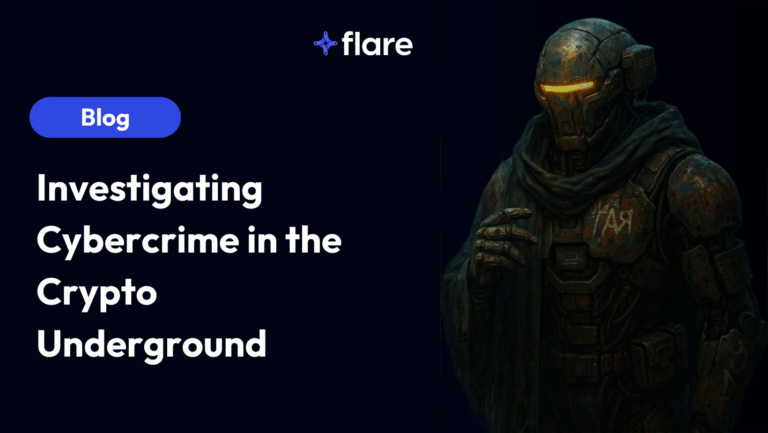
Ransomware attacks have become an increasingly prevalent cyber threat, affecting organizations of all sizes and industries. These malicious software programs encrypt the victim’s data and demand a ransom in exchange for the decryption key. With the commodification of cybercrime, threat actors are escalating from single extortion ransomware model to double and triple extortion.
Read our Threat Spotlight: Triple Extortion Ransomware to learn more about the latest trends in ransomware attacks including: double/triple extortion, different types of ransomware, methods for stealing sensitive data, and more and/or keep reading about the five common ransomware attack vectors.
The Rise of Ransomware: Understanding its Impact on Businesses and Individuals
The rapid rise of ransomware attacks in recent years has significantly impacted businesses and individuals alike, causing financial losses, reputational damage, and disruption of critical services. Ransomware attacks have increased exponentially by 437% from 2020 to 2021.
As cybercriminals continue to evolve their tactics and refine their malicious software, the scale and sophistication of ransomware attacks have grown.
For businesses, the consequences of an attack can be staggering, resulting in operational downtime, loss of sensitive data, and hefty financial burdens due to ransom payments and recovery efforts. Ransomware attacks becoming more commonly widespread and impactful underscores the importance of understanding common attack vectors, adopting robust cybersecurity measures, and staying informed about the latest threats in order to mitigate the risks posed by these nefarious cyber-attacks.
Ransomware as a Service (RaaS)
Ransomware as a Service (RaaS) represents a growing trend in the cybercrime landscape, where sophisticated ransomware developers provide their malicious software and infrastructure to other criminals, typically for a fee or a share of the profits. This business model has effectively made ransomware attacks more available for threat actors of various levels, as they don’t necessarily need to develop their own infrastructure to launch sophisticated campaigns.
RaaS platforms often provide user-friendly interfaces, customer support, and regular updates to their ransomware strains, making it easier than ever for aspiring attackers to enter the world of cyber extortion. The proliferation of RaaS has contributed to the rapid increase in ransomware attacks worldwide, presenting an even greater challenge for security practitioners as they strive to protect their organizations against this evolving and potent threat.
Double and Triple Extortion Ransomware
Double and triple extortion ransomware attacks represent an alarming escalation in the tactics employed by cybercriminals, further intensifying the pressure on targeted organizations. In a double extortion attack, cybercriminals not only encrypt the victim’s data but also exfiltrate sensitive information before initiating the encryption process. The attackers then threaten to release the stolen data publicly or sell it on the dark web unless a ransom is paid, thereby adding a secondary layer of extortion.
Triple extortion takes this strategy even further by targeting the organization’s customers or partners, whose data may have also been compromised during the attack. This puts additional pressure on the victim organization, as they face not only the prospect of losing their own data but also the potential legal and reputational consequences of exposing their clients’ or partners’ information. Furthermore, these clients or partners may push them to pay the ransom, in an attempt to try to secure their own information.
These evolving extortion tactics highlight the need for security practitioners to be vigilant and proactive in their defense strategies, prioritizing comprehensive data protection measures to mitigate the risks associated with ransomware attacks.
Five Common Ransomware Attack Vectors
Ransomware attacks have emerged as a major cyber threat, causing significant damage to businesses and individuals around the globe. As cybercriminals continue to refine their tactics, it’s crucial for security practitioners to understand the common attack vectors employed by ransomware operators. By examining the five most prevalent methods, including phishing emails, drive-by downloads, Remote Desktop Protocol (RDP) exploits, software vulnerabilities, and social engineering, we can gain valuable insights into the techniques used by malicious actors to infiltrate systems and deploy their malicious payloads. Familiarity with these attack vectors is essential for developing effective defense strategies and implementing robust security measures, ultimately safeguarding organizations from the devastating consequences of ransomware attacks.
- Spear-phishing: Ransomware attackers often use phishing emails containing malicious attachments or links to trick users into downloading and executing the ransomware payload.
- Drive-by Downloads: Users can inadvertently download ransomware onto their systems by visiting compromised websites or clicking on malicious online ads, which can exploit vulnerabilities in their browsers or plugins.
- Remote Desktop Protocol (RDP) Exploits: Threat actors may target unsecured or poorly secured RDP connections to gain unauthorized access to a victim’s system and deploy ransomware.
- Software Vulnerabilities: Ransomware can spread by exploiting known security flaws in operating systems, applications, or network infrastructure, allowing the malicious actor to gain access and deploy the malicious payload.
- Social Engineering and Malvertising: Threat actors can use social engineering tactics, such as impersonating a trusted source, to trick users into clicking on malicious links or ads, which can then deliver ransomware to the victim’s device.
Preventing Ransomware Attacks: Best Practices for a Robust Defense Strategy
In order to effectively combat ransomware threats, security practitioners must adopt a comprehensive defense strategy that incorporates best practices and tools designed to protect their systems and data.
A multi-layered approach to security is essential for minimizing the risk of ransomware attacks. First and foremost, organizations should prioritize employee education and training to raise awareness about phishing emails, social engineering tactics, and safe browsing habits. In addition, implementing robust security measures such as regular software updates, patch management, and strong access controls can help safeguard against vulnerabilities that ransomware attackers exploit.
Furthermore, deploying advanced security tools like endpoint protection platforms, network-based intrusion detection and prevention systems, and email filtering solutions can help to detect and block potential threats before they infiltrate the network.
Also, maintaining up-to-date backups of critical data is a crucial component of any ransomware defense strategy, as it ensures that organizations can recover their data without having to resort to paying a ransom.
Though each organization’s monitoring strategy can differ based on context, monitoring these areas can help protect against ransomware:
- Monitor third parties by conducting an initial security assessment before beginning a new business relationship. Continue to monitor this third party’s security posturing over the course of the partnership.
- Monitor ransomware group and any potentially relevant file listings. This can be beneficial to finding out about risks as soon as possible and start addressing the leak.
- Monitor dark web markets and forums as well as illicit Telegram channels for stolen company information and relevant threats.
By integrating these best practices and tools into their cybersecurity framework, security practitioners can fortify their defenses against ransomware attacks and better protect their organizations.
Ransomware Readiness with Flare
Flare closely monitors the clear & dark web and illicit Telegram channels so your cyber team doesn’t have to sort through 13 billion leaked credentials. If our platform detects any suspicious mentions about your organization, we’ll send prioritized alerts to cut through the noise.
Want to see Flare in action? Sign up for a free trial to see what ransomware readiness for your organization looks like.





